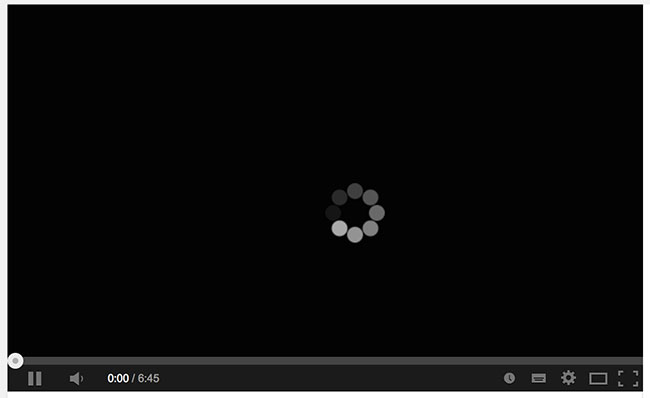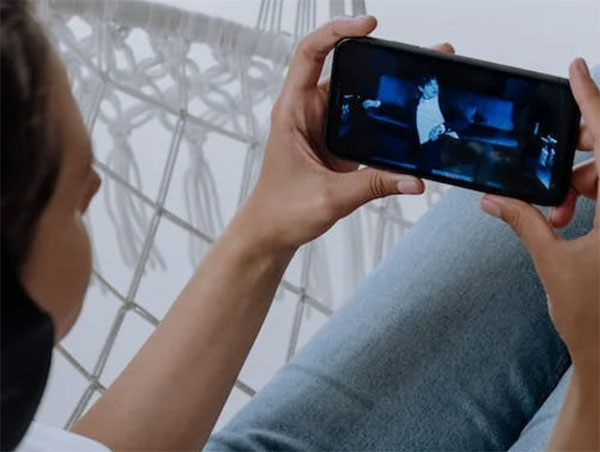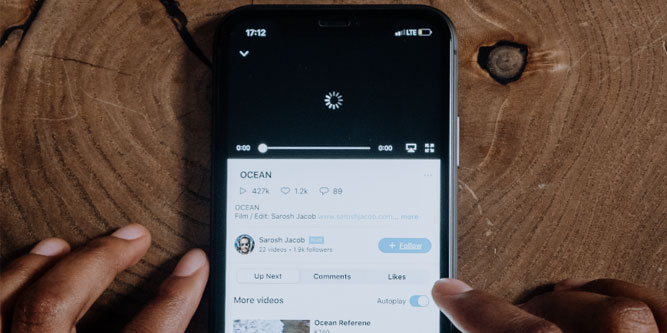YouTube has totally changed the way we think about video entertainment. Instead of being limited to big media corporations, you can watch content from everyday people like yourself. But what do you do when your video keeps buffering or stuttering and won’t play smoothly?
Quick Answer: YouTube videos most often buffer because your internet connection is too slow to support good video quality. That said, you may also need to update your browser or change your settings. At worst, you’ll have to update your graphics drivers and perform a clean reboot.
YouTube Buffering? Why Does it Keep Happening?
There are a number of reasons your YouTube videos might get stuck buffering. That said, there are a few more common reasons that are worth highlighting.
The most common cause of buffering is that there’s something wrong with your internet. HD video streaming requires a reliable, consistent internet signal. On your smartphone, this means having a strong data signal or a full WiFi signal. On your computer, you’ll want either an Ethernet connection or a good WiFi connection. If your WiFi is showing that it’s fully connecting, you may want to test your speed or reset your router.
There could also be an issue with the YouTube video player itself. If you’re having trouble with 1080p video, you can lower that to 720p or 480p. This can quickly put a stop to buffering as well as stuttering.
Finally, there could be trouble with your computer. Even if you have good internet, you may need to disable hardware acceleration to smooth things out. You may also have maxed out your RAM capacity, or you may be running an outdated graphics card driver. In any of those scenarios, your computer itself is what’s causing YouTube to act up.

How to Fix YouTube Buffering and Stuttering
We’ve talked about some of the potential causes for YouTube buffering and studying. But how do you actually solve these problems? Let’s talk about some of the ways you can fix your YouTube player. By the end of the process, you’ll be back to enjoying the content you know and love.
1. Check Your Internet Connection
The most common cause of YouTube buffering is a slow internet connection. One way to test this is simply to look at your WiFi icon on your computer. Assuming your WiFi connection is at full strength, you can run an internet speed test. This will tell you whether your connection is fast enough to stream HD video. If it’s not, there are a couple of things you can do.
To begin with, you can restart your computer or browser. Chrome in recent days has had some issues with slowing down after long periods of use. Closing and opening the browser window can work wonders. Restarting your computer can achieve a similar effect, and it’s smart to do occasionally anyway.
The next thing you can try is resetting your home network. Unplug your modem and router, and wait for 15 seconds. Next, plug the modem back in and wait for all the lights to come back on. After that, plug in the router, and wait for it to fully boot. This will clear the cache on both the modem and the router, speeding up your connection.
If your WiFi connection isn’t at full strength, a reboot probably won’t help. You’ll need to find a way to get your computer closer to your router. As an alternative, you can upgrade to a router with better coverage. This will extend your range and provide a stronger signal at a distance.
2. Check Your Browser Settings
Your browser settings can also affect your YouTube performance. This guide works for Google Chrome, which is the most popular browser and the best one for YouTube. However, the steps will be very similar for Firefox users.
- Launch Google Chrome.
- Click the three dots at the top right corner of the screen to bring up a dropdown menu.
- Select “Settings.” Then click “Privacy and security.”
- You’ll see a number of options that open up various sub-menus. Click “Site settings.”
- This will show the sites you’ve changed settings for most recently. If YouTube doesn’t show up, click “View permissions and data stored across sites.” Then search for YouTube in the list.
Click the right arrow, then scroll down to Javascript. If it’s not enabled, hit the toggle button to enable it.
Now go to YouTube and try to watch a video. If your settings were the problem, your video should load and play smoothly.
3. Update Your Browser
If your browser is out of date, it could be causing trouble with YouTube. Again, this is most often the case with Chrome, since Chrome and YouTube are both owned by Google.
In most cases, you won’t have to manually update Chrome. It updates automatically whenever you restart the browser. But if you leave your browser open all the time, it could be out of date.
Look at the top right and see if there’s a green or yellow “Update” icon. Green indicates that the update is relatively new. Yellow, on the other hand, indicates that it’s been several days since the update became available. Either way, click the button, and click “Yes” when prompted to restart the browser.
Note that some older guides will tell you to install or update Adobe Flash Player. This information is woefully out of date. Adobe discontinued Flash in December of 2020 due to security issues, and YouTube no longer uses Flash. If you see a link anywhere to download Flash, run as fast as you can in the other direction. It’s either a scam or a virus.
4. Change Your Hardware Acceleration Settings
Hardware acceleration is a weird setting that works differently on different computers. On an older computer, hardware acceleration can actually slow you down. That’s because older processors and GPUs weren’t designed with modern applications in mind. They’ll work better if you just leave acceleration off. Conversely, newer systems will work better with hardware acceleration enabled. Otherwise, you could end up with video stuttering.
Go to your Control Panel. If you can’t find it, just search for it in your search bar. Then select “Display,” followed by “Change display setting.” This option will appear on the left side of the window.

Scroll down to “Advanced display settings,” and click it. Select the Troubleshoot tab, then “Change settings.” In this screen, there will be several options, including hardware acceleration. If it was on, turn it off; if it was off, toggle it on. Then select “OK.”
Keep in mind that you’ll need to restart your computer for this setting to take effect. So go ahead and reboot and see if YouTube works properly.
5. Update Your Drivers
From time to time, your graphics card manufacturer will release driver updates to improve performance. AMD, Nvidia, and Intel are constantly making small tweaks and optimizations. And while updates will normally be applied automatically, that’s not always the case. In that situation, YouTube videos can stutter or get stuck in a buffering loop. Here’s how to manually update your drivers on a PC:
- Open your Start menu and select the Control panel. If you can’t find it, search for it in the search bar.
- Scroll down to the Device Manager and click it. Then click where it says “display adapters.”
- At this point, you should see your graphics card. Right click it.
- On this screen, select “update driver software.” This will install the latest drivers.
If there’s no update, you can select “uninstall” instead. Follow the instructions, then reinstall the driver and you should have the latest version. Keep in mind that you’ll have to restart your PC for any changes to be applied. So go ahead and reboot your system and see if YouTube works.
6. Perform a Clean Reboot
A clean boot will load up your system without a bunch of backup tasks and clutter. Open your search box, and search for “MSConfig.” Within MSConfig, select “system configuration,” then “services.” Hide all the Microsoft services, then click “disable all.” Then navigate to the Startup tab, open and close your Task Manager, and click “OK”.
At this point, you’re ready to restart your computer. Reboot it as normal, and try launching YouTube. Hopefully, everything should work as intended, without buffering or stutterng.

In Summary
As you can see, there are plenty of ways to stop YouTube videos from buffering. In 90% or more of cases, the problem is with your internet connection. Make sure your WiFi signal is strong and reboot your router and modem to see if that fixes anything. That said, you’ll have plenty of solutions if that doesn’t work.
You can change your browser settings to enable Javascript, or update your browser to the latest version. You’ll also want to look at your hardware acceleration settings and make sure your GPU drivers are up to date. If all else fails, you can perform a clean reboot to see if other programs are interfering with your YouTube performance.
If you find that your YouTube app freezes when trying to type a comment, there’s a whole other issue that causes this that you might need to look into.
Meet Ry, “TechGuru,” a 36-year-old technology enthusiast with a deep passion for tech innovations. With extensive experience, he specializes in gaming hardware and software, and has expertise in gadgets, custom PCs, and audio.
Besides writing about tech and reviewing new products, he enjoys traveling, hiking, and photography. Committed to keeping up with the latest industry trends, he aims to guide readers in making informed tech decisions.



